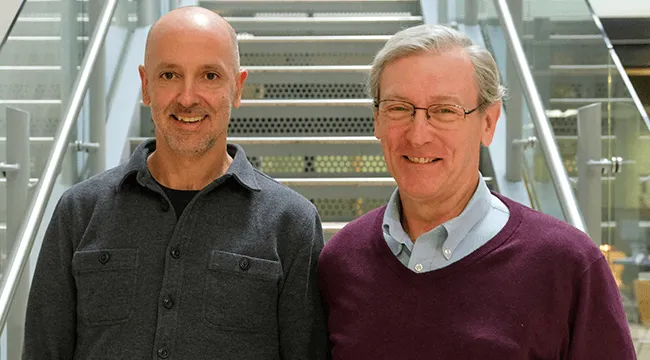A new R01 grant from the National Institutes of Health (NIH) awarded to the Department of Molecular Physiology and Biophysics is helping University of Vermont researchers reshape how scientists understand hypertrophic cardiomyopathy (HCM)—one of the most common inherited heart diseases, affecting an estimated 3,200 Vermonters.
For decades, HCM was thought to result mainly from problems with how the heart’s muscle fibers contract. But new findings from the lab of Michael Previs, Ph.D.’10, associate professor of molecular physiology and biophysics at the Larner College of Medicine, suggest a deeper cause: a disruption in how the heart’s molecular “motors” are organized, recycled, and renewed over time. “Every heartbeat depends on a delicate balance of organized chaos inside our heart cells,” Dr. Previs says. “We’re finding that when this balance is disturbed, the heart can grow abnormally thick and stiff.”
A New Look at the Heart’s Molecular Machinery
Central to this research are two proteins: myosin, the molecular motor that drives heart contraction; and myosin-binding protein C (MyBP-C), which helps organize and regulate myosin. Until now, MyBP-C was thought to control only how myosin generates force. The Previs Lab’s research shows it also governs how myosin molecules are arranged in heart cells and how they are replaced over time. When MyBP-C is missing—as is most often the case in HCM patients—myosin is recycled less efficiently, upsetting the heart’s normal maintenance. This imbalance may contribute to the abnormal thickening and stiffening of the heart muscle.
Linking Molecular Insights to Treatments
Colleen Kelly, Ph.D., a postdoctoral scholar in the Previs Lab, previously discovered that mavacamten, a newly approved HCM therapy, may help restore balance by shifting how myosin molecules are distributed within cells. Building on this work, the new NIH-funded project—conducted in collaboration with Bradley Palmer, Ph.D., Larner assistant professor of molecular physiology and biophysics—will explore how MyBP-C controls this molecular organization and how that regulation affects both heart function and protein renewal. “Our goal is to move beyond treating symptoms,” Previs says. “By understanding how these molecular systems maintain themselves, we may be able to intervene before the heart is damaged—or even reverse the disease process.”
Toward Next-Generation Therapies
By revealing a previously unknown aspect of how heart muscle maintains its structure and strength, this research could pave the way for next-generation therapies for inherited heart disease—bringing new hope to patients and families affected by hypertrophic cardiomyopathy.
Research like this has contributed to the University of Vermont’s designation by the Carnegie Classification of Institutions of Higher Education as an R1 institution, placing it in the top tier of research universities in the U.S.

